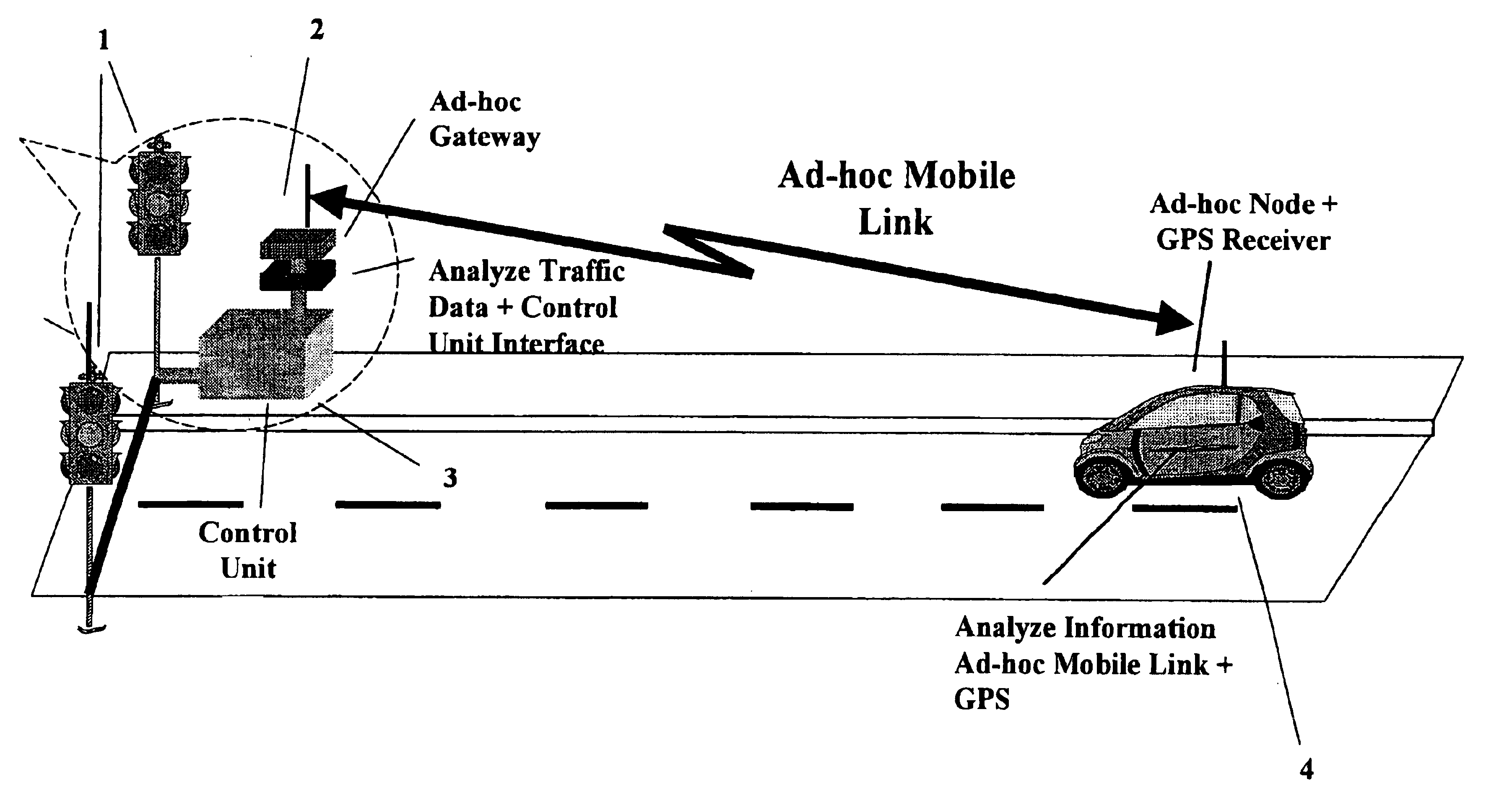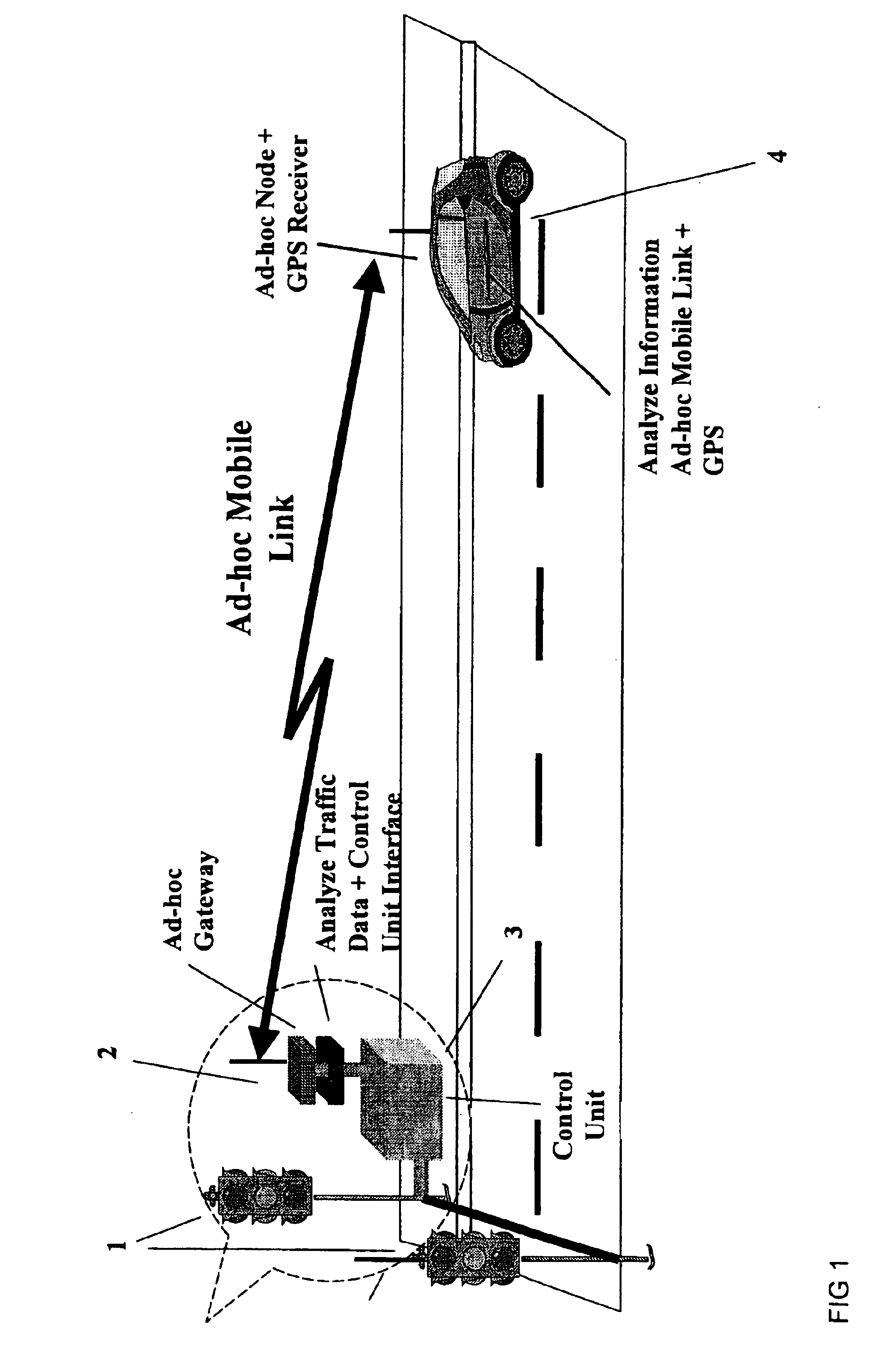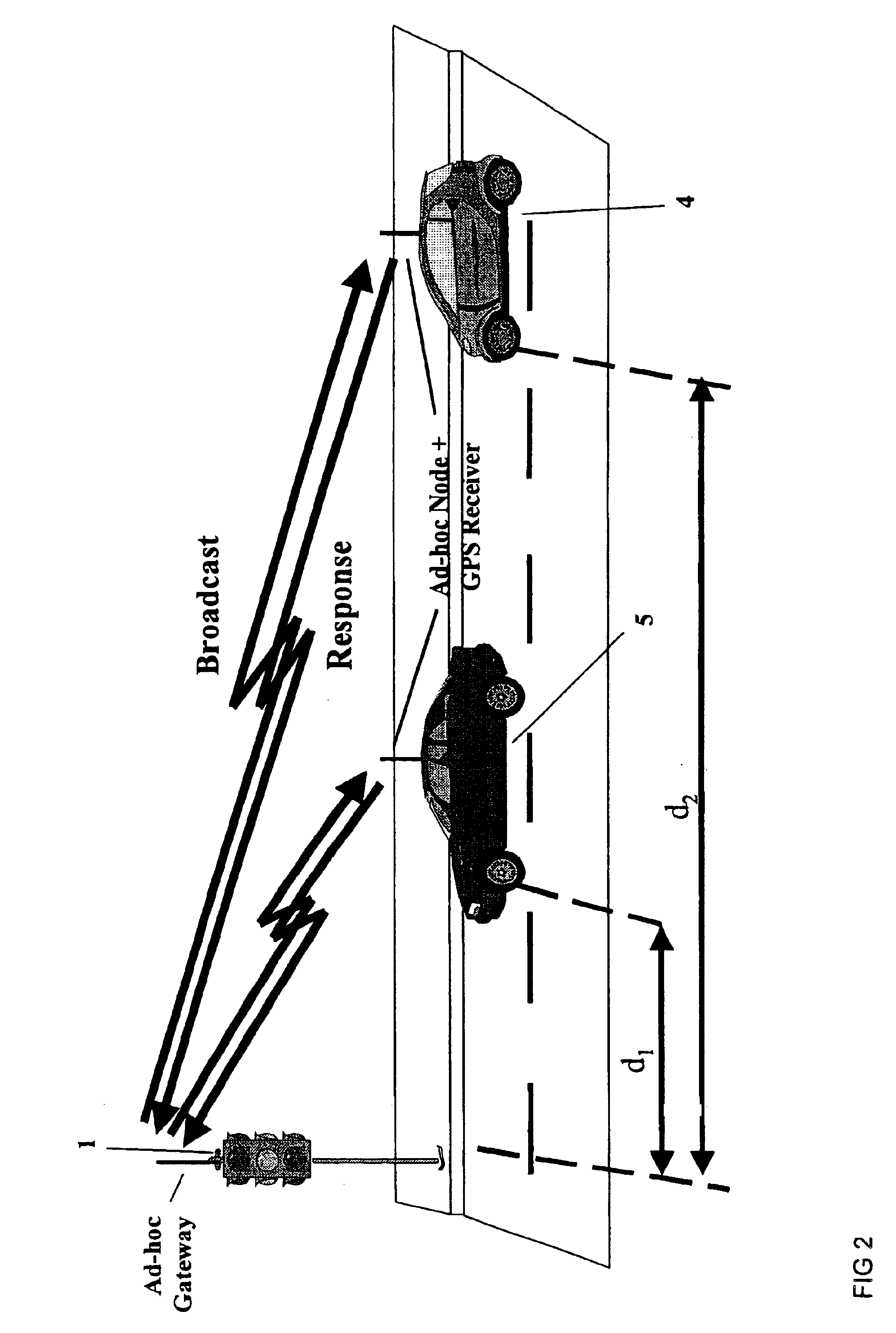Method and arrangement for controlling a system of multiple traffic signals
a traffic signal and control system technology, applied in the direction of electrical/magnetic computing, analogue processes for specific applications, instruments, etc., can solve the problems of low susceptibility of such a decentralized system to errors, local limitation is provided, and traffic lights cannot be switched independently of each other
- Summary
- Abstract
- Description
- Claims
- Application Information
AI Technical Summary
Benefits of technology
Problems solved by technology
Method used
Image
Examples
Embodiment Construction
[0030]FIG. 1 shows schematically the principle of the control of traffic signals 1 according to an embodiment of the present invention on the basis of traffic data acquisition and analysis of the traffic situation on the basis of a specific example. Traffic signals 1 are designed here as traffic lights, which are located at an intersection of roads. Usually not just one single traffic light 1 is provided at such an intersection, but instead at least one traffic light 1 will be provided there for each direction of travel. The switching phases of these traffic lights 1 must necessarily be coordinated, so that traffic lights 1 at this intersection form a locally limited group of mutually functionally dependent traffic signals 1. For the case when a single traffic light 1 is sufficient, the following is also applicable accordingly, whereby instead of referring to a locally limited group of traffic lights 1, the discussion refers to only a single traffic light 1.
[0031]A transceiver unit ...
PUM
 Login to View More
Login to View More Abstract
Description
Claims
Application Information
 Login to View More
Login to View More - R&D
- Intellectual Property
- Life Sciences
- Materials
- Tech Scout
- Unparalleled Data Quality
- Higher Quality Content
- 60% Fewer Hallucinations
Browse by: Latest US Patents, China's latest patents, Technical Efficacy Thesaurus, Application Domain, Technology Topic, Popular Technical Reports.
© 2025 PatSnap. All rights reserved.Legal|Privacy policy|Modern Slavery Act Transparency Statement|Sitemap|About US| Contact US: help@patsnap.com



